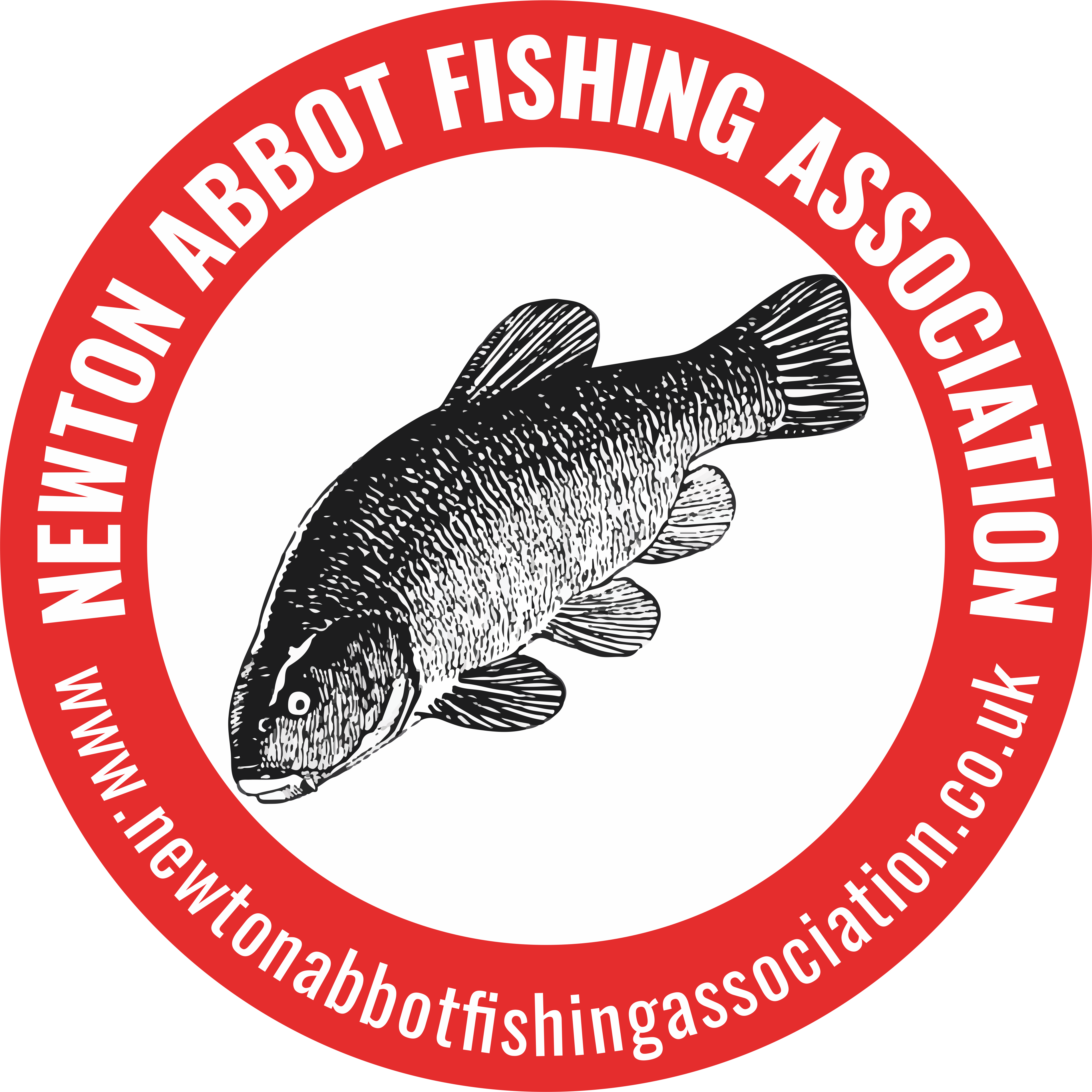Newton Abbot Fishing Association Risk Assessment
It is the duty of Newton Abbot Fishing Association (NAFA) to familiarise its members, officials and all visiting anglers with the principals of safety and risk assessment. All members, officials and visiting anglers should make themselves aware of the risks they face in the surroundings they find themselves and carry out their own risk assessment. Particular care should be taken to assess the safety of bankside conditions and fishing platforms. Wet or particularly cold weather could make these unsafe and members and anglers should exercise caution and choose a safe location. This usually amounts to common sense. All persons must then take the appropriate action to ensure their own safety and that of others. The purchase of a membership or day ticket shall be deemed as acceptance of this safety statement. All angling activities are undertaken at the Anglers own risk and members and day ticket anglers are required to familiarise themselves with general risks associated with angling.
- Paths and Banks: Only use obvious paths along the bank. Do not place anything on the path which may cause a trip hazard. Beware of tree roots, brambles etc. which may cause trip hazards. Not all paths on back waters are maintained, take care when using all paths.
- Wading: Under no circumstances is wading allowed in our waters. The use of wellingtons or waders will be tolerated in standing water to access a peg when water levels are high. This would be to knee depth only.
- Power Lines: Do not fish under or near power lines, electricity can arc over considerable distances. You are ideally earthed in water to conduct electricity. Poles and carbon fibre rods are also an excellent conductor of electricity as are graphite rods.
- Trees: Fishing under trees can be unsafe at any time but particularly in windy conditions or the period directly after a storm when branches and roots may have been weakened. Trees must not be climbed.
- Lightning: Again you are ideally earthed when in water and if using a graphite rod, you have a good lightning conductor. In case of lightning it is recommended that you lay your rod flat on the ground and take shelter (not under trees). A car is a good place to shelter.
- Casting: Always show consideration to other users on the bank by avoiding contacting anyone with your back-cast.
- Hooks: Hooks by their design are sharp and easily penetrate the skin. Their use brings them into contact with germs etc, that can be injurious to health. Caution should be used when handling hooks, tying on or removing hooks. Rusty hooks should be avoided at all times.
- Weils Disease: This is transmitted in rat’s urine. Never put wet lines in your mouth or any other items of tackle that has been in the water. Wear waterproof plaster on any cuts or abrasions. There may also be a risk in some waters from treated sewage effluent. Use anti bacterial hand-wash and avoid handling food items until you have washed thoroughly. Symptoms of Weils disease include: Chills, nausea & vomiting, sudden headaches, loss of appetite and muscle pain (particularly in the calves and lower back). If you have these symptoms after fishing, seek urgent medical attention.
- Vehicles: Vehicles must be always driven in a courteous manner, particularly on leaving public roads to access Club parking facilities. When parking in Club designated parking areas, please do so with due regard for other users and do not block access at any time. Car parking is at the owners risk.
Hazard Effects Controls Applicable To Fishing Activity Solar Radiation Sunburn/ Heatstroke Wear sunscreen, hat and sunglasses. Use brolly for shade and drink regularly Cold / Wet Weather Influenza/ Hypothermia Wear appropriate clothing and footwear Use common sense to assess risk Rat Urine
stings and bites
Weils Disease
Allergic reactions
. Report all instances of unexplained fever to your GP asap.
Wear insect repellent. Avoid insect nests.
Wash your hands as soon as possible after fishing and before eating, drinking or smoking.
Cover all wounds with waterproof plasters and wash all new cuts with alcohol before covering with a waterproof plaster. Report all instances of unexplained fever to your doctor
Fishing in general Fishing platforms Can be slippery in wet and freezing weather. Can cause injury/death The wooden fishing platforms have been covered in wire netting to help prevent people slipping. There are lifesaving rings on all lakes. Slippy/ Uneven ground/ access/Vehicles Personal Injuries Wear appropriate footwear and watch your footing; Do not stray onto adjacent land; Cars to be parked carefully in designated car park only, Be careful and watch your footing on the bank, beware of unstable banks and steep drop offs. Be aware of slippery areas and hazards particularly in poor weather. Wear suitable waterproof clothing. Falling into water Drowning/ Hypothermia Wear appropriate footwear. Take care at the waterside. Wear suitable waterproof clothing. A life preserver is always recommended Always carry mobile phone with you; Avoid where possible fishing alone Medical Conditions Personal conditions endangering yourself It’s your duty of care to advise other anglers of any medical condition and what to do in an emergency Always carry mobile phone with you; Avoid where possible fishing alone Electrocution Death/ Severe burns Severe burns or death Do not fish or walk with a fishing rod/ pole in the air during electrical storms. Always adhere to the warning signs near overhead power lines. Fishing in general Casting and handling fishing tackle Cuts and abrasions Beware fishing hooks are sharp and lines can cut deep. Keep well clear of others that are casting. If you need to approach others that are casting make them aware of your presence as you approach Hazard Effects Controls Applicable to Work Parties Environment Mud; Rain, Sleet, Snow
Hot /cold temperature
Water; UV rays
1. Wear appropriate PPE
2. Washing /
3. Weather Reports
4. Sun creams
5. Adequate Clothing
Ensure good hygiene
Wear suitable and sufficient clothing to meet climate conditions
Wear suitable PPE (overalls, boots, gloves, hat)
Wear sun creams/hats etc in high summer
Take plenty of food and drink
Manual Handling
Hazardous substances; Cuts/impacts; Burns
1. Two man lifting
2. Trolleys / wheelbarrows
3. Equipment manufacturers’ guidance
4. Wear appropriate PPE
5. Close venue during work
Competent persons only to use equipment ; Follow manufacturer’s instructions
Seek assistance to lift heavy/awkward loads
Keep equipment under supervision
Never refuel when equipment is running
PPE to be worn in accordance with any equipment
Lone working
Slips/trips
Accident/ Illness 1. Scheduled meeting time
2. Instructions prior to work activity
3. Text another member before start and when finished
Avoid lone working Ensure someone knows where you are going and when you will be back.
Inform others of intended work; Provision of First Aid Kit
Make sure you have the Clubs Committee and Bailiffs contact details with you in case of emergencies.
Bonfires
Burns
Spread of fire
Smoke inhalation
1. Locate in clear/open area
2. Constant supervision
3. Small fires only
Do not use petrol to light fire
Keep all flammable liquids away from area
Wood and vegetation only to be burnt
Working from a boat Drowning/hypothermia 1. Wear a life preserver
2. Ensure boat is not leaking
3. Work with a banksman
Do not use a boat alone.
Ensure that mobile phone is available
Do not stand in a boat
Where possible have a rope attached to the boat on the bank

